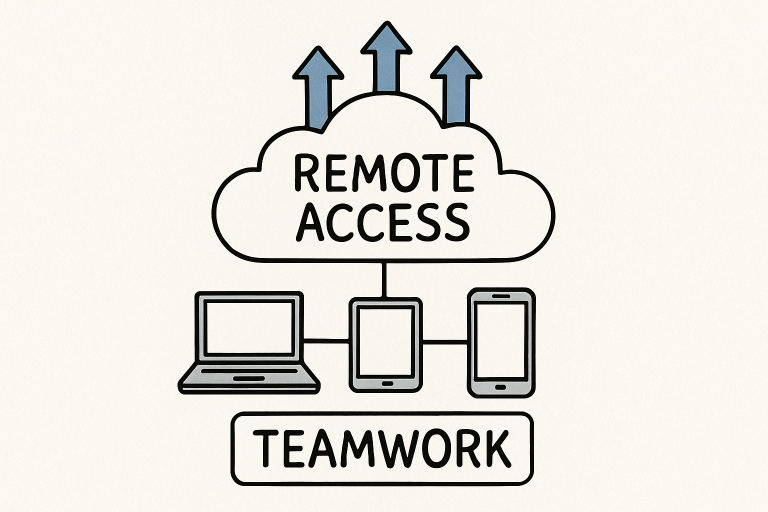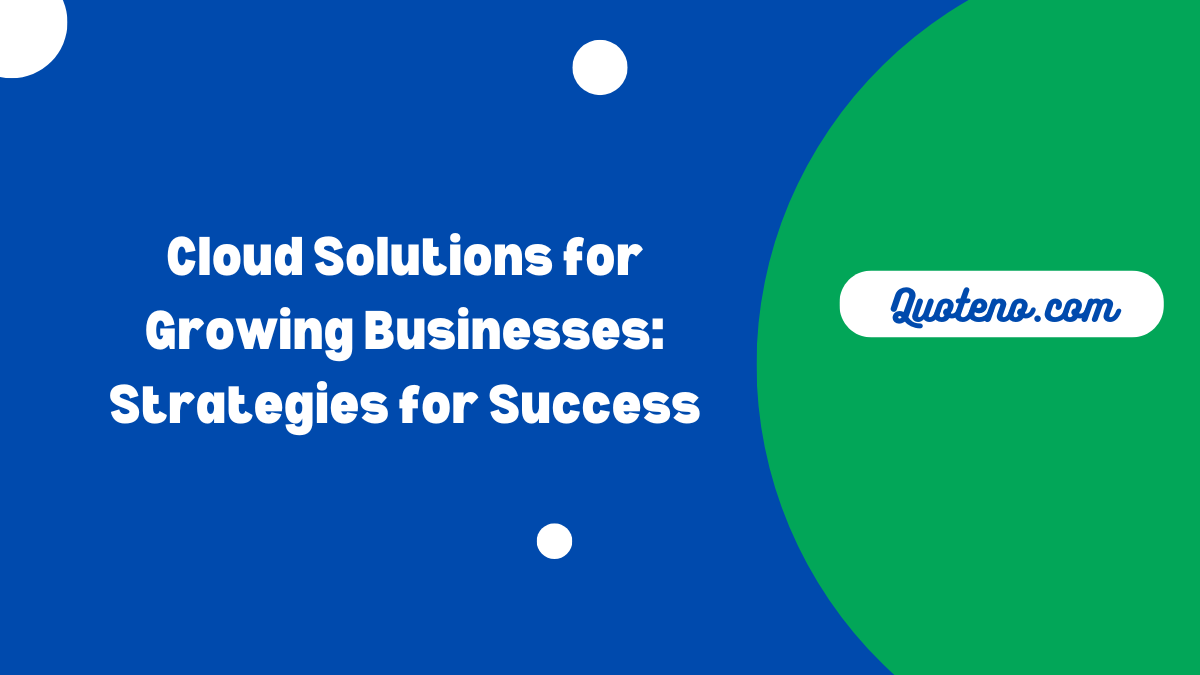Cloud solutions play a transformative role in how growing businesses operate and compete in today’s digital landscape. Adopting cloud technologies has become a fundamental strategy as companies strive to become more agile, innovative, and efficient. The flexibility to scale up or down and the ability to only pay for resources used offer a competitive edge, making cloud services appealing to organizations of all sizes. Suppose your business is seeking a trusted guide. In that case, Arctic IT is one of the industry leaders in delivering tailored cloud strategies to help companies evolve and thrive in an ever-changing market.
The move to the cloud isn’t just about technology—it’s about embracing new ways to collaborate, streamline operations, and drive sustainable growth. Organizations leveraging cloud solutions can quickly adopt the latest tools, share data securely, and promote remote collaboration among team members, no matter where they are. As more businesses embrace cloud innovation, understanding the core concepts and best practices becomes essential for continued success in a competitive environment.
Table of Contents
Understanding Cloud Computing
Cloud computing is the on-demand delivery of IT resources online with pay-as-you-go pricing. Rather than investing in complex infrastructure, businesses can access computing power, storage, databases, and applications hosted remotely. This minimizes the need for in-house hardware and maintenance while providing seamless access to services from virtually anywhere. By harnessing the power of scalable virtual resources, organizations can concentrate on core business operations and innovation rather than IT management.
Benefits of Cloud Solutions
The advantages of adopting cloud solutions extend far beyond convenience. Here are a few leading benefits for growing businesses:
- Scalability: Cloud resources can be expanded or reduced as business needs change, preventing underutilization and overexpenditure.
- Cost Efficiency: Businesses pay only for what they use, turning capital expenses into variable operational costs and avoiding large upfront investments.
- Flexibility: Employees have secure access to data and applications from any location, promoting remote and hybrid work models.
- Enhanced Collaboration: Teams collaborate in real time, regardless of geographical boundaries, improving productivity and innovation.

Investing in cloud technology also future-proofs your business by enabling rapid adoption of emerging solutions. To explore how leaders transform through technology, refer to Forbes’ recent market analyses on Cloud Computing.
Choosing the Right Cloud Service Model
Selecting an appropriate cloud model is crucial to achieving the desired business outcomes. The three primary cloud service models include:
- Infrastructure as a Service (IaaS): It offers core computing, storage, and networking capabilities on demand, which is ideal for businesses needing customizable infrastructure.
- Platform as a Service (PaaS): Delivers tools and frameworks for developers to build, deploy, and manage applications without overseeing the underlying hardware.
- Software as a Service (SaaS): This type of service provides ready-to-use software applications delivered via the Internet, allowing quick setup and reduced maintenance overhead.
By aligning the service model with your long-term goals and resource requirements, you can fully leverage the cloud’s offerings.
Implementing Cloud Solutions
Deployment success hinges on a thoughtful strategy and execution. The following steps can help ensure a smooth transition to the cloud:
- Assess Business Needs: Analyze operational goals, application requirements, and organizational priorities.
- Choose a Cloud Provider: Evaluate potential partners for reliability, security certifications, service offerings, and support options.
- Plan Migration: Develop a comprehensive approach for transferring data and applications to the cloud, minimizing downtime and disruption.
- Train Staff: Provide employees with adequate training to maximize the new system and minimize resistance to change.
Consulting with independent technology experts and proven partners can further clarify which solutions best match your unique requirements.
Security Considerations
Security remains a fundamental concern in the cloud era, with businesses responsible for safeguarding their data. Prioritize the following initiatives:
- Enforce role-based access controls and strong authentication to minimize risk.
- Routinely update and patch systems to address the latest threat vulnerabilities.
- Schedule regular security audits, penetration testing, and compliance reviews to identify gaps and improve protocols.
Familiarizing your team with best practices from credible authorities, such as the Cloud Security Alliance’s Security Guidance, can further strengthen resilience.
Cost Management
Keeping cloud costs in check is essential for long-term success. Reliable techniques for optimal cost management include:
- Continuously monitor usage trends and address inefficiencies in real time.
- Leverage cost calculators and predictive analytics tools to prevent surprises and inform decision-making.
- Implement governance policies around resource allocation, setting permissions and quotas to control spending.
Empowering finance and IT to work collaboratively can help instill a culture of accountability and cost awareness across the business.
Future Trends in Cloud Computing
Cloud computing is in a constant state of evolution, and forward-thinking organizations are preparing to capitalize on these emerging trends:
- Hybrid and Multi-Cloud Strategies: Blending private and public cloud platforms allows businesses greater flexibility, resilience, and regulatory compliance.
- Serverless Computing: Developers deploy and run code without managing servers, enabling faster innovation and lower maintenance.
- Edge Computing: Data is processed closer to the source, such as IoT devices, reducing latency and bandwidth usage for time-sensitive workloads.
Keeping pace with these trends ensures organizations remain inspired and equipped for ongoing digital transformation.
Conclusion
Cloud solutions have rapidly become a cornerstone for growing businesses seeking agility, efficiency, and a sustainable path to innovation. By understanding service models, methodically implementing new technologies, prioritizing security, and managing costs, organizations can unlock the full value of the cloud. As cloud computing evolves, staying informed of best practices and future trends will enable your business to meet new challenges and seize opportunities for long-term success.
- Cloud Solutions for Growing Businesses: Strategies for Success - October 10, 2025
- How Grease Trap Maintenance Impacts Restaurant Safety and Efficiency - October 1, 2025
- Professional Wedding Organizer Bali: Making Your Dream Wedding a Reality with The Seven Agency - September 29, 2025

